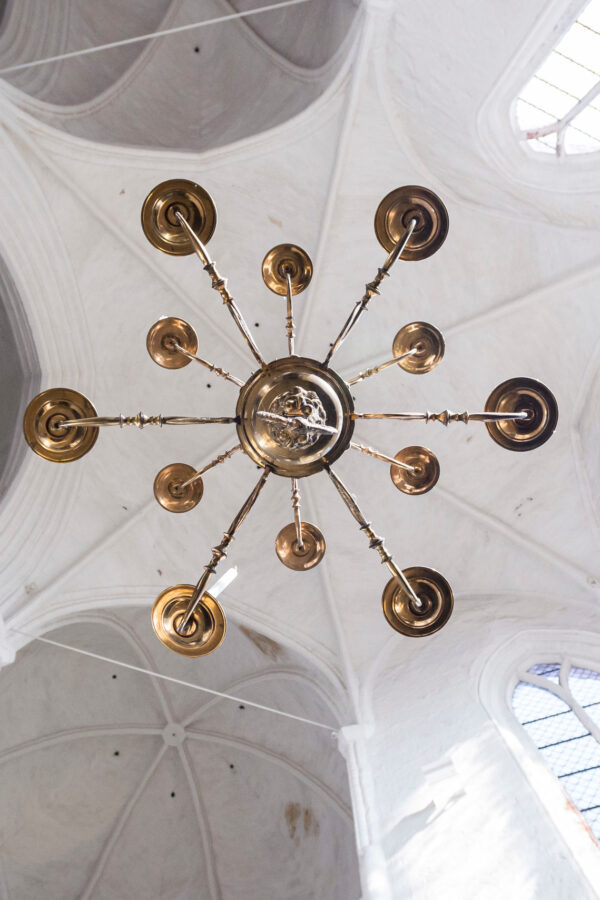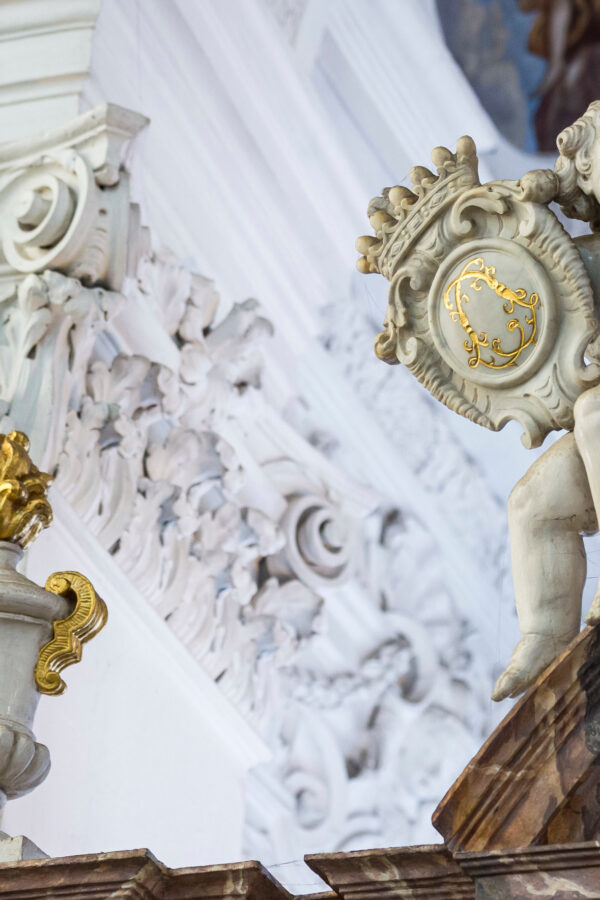Today I take you to the Lübeck Cathedral. Its double spire makes its formative contribution to the 7-tower silhouette of Lübeck and has experienced an eventful history since its beginnings. The first wooden church building dates back to 1162 after Lübeck became the seat of the bishopric in 1160. The foundation stone for the brick building was laid in 1173. The builder was Henry the Lion, to whom a monument was erected on the north side of the Cathedral. The Romanesque building was rebuilt in the 14th century in Gothic style: the basilica became a three-nave hall church, and both side aisles were raised to the height of the nave. The Reformation led to the curious situation, which lasted for 41 (!) years, that the western part of the church building became Protestant, while the choir remained a Catholic and episcopal centre.

In 1942, bombs destroyed the roof of the Cathedral, immeasurable art treasures in the church interior were lost, but some objects could be saved. Securing the ruin and rebuilding progressed slowly. Throughout Germany, the association “Save the Cathedral” collected donations for its restoration. It was not until 1960 that work could begin, and it took almost 20 years to complete the restoration of the interior as well. Paradise – the vestibule with the representative main entrance, which was also the place of ecclesiastical jurisdiction – could be given back to the public and the cathedral community only in 1982. Criminals could first escape the secular authorities and take refuge in paradise
In its interior, the Cathedral appears Protestant simple and cool. The Triumphal Cross from 1477 is all the more impressive to me. Fortunately it could be saved in 1942, even though it suffered considerable damage: Polish experts worked on the restoration of the cross for 14 years, taking as long as Bernt Notke once did to create the cross in the 15th century.

This wonderful carving has a height of 17 meters and displays more than 70 carved figures. The client and donor was the then Bishop Albert Krummediek, who is also depicted among the sculptures on the triumphal cross as the donor. He kneels opposite the figure of the sinner Mary Magdalene, whose face allegedly resembles that of the bishop’s mistress.
Also the completely preserved rood screen, which shows the 4 patron saints of the church, was made by Bernt Notke – who is considered one of the most important artists of that time in the Hanseatic region. My gaze always goes to the rood clock, which dates from the 17th century and reminds us that our time is only borrowed.
Four of the preserved medieval winged altars could be returned to the Cathedral, including the altar of the Stecknitz sailors, who made their home in the Cathedral district and brought salt from the Lüneburg salt works to Lübeck. By the way, the famous Passion altar by Hans Memling originally stood in the Cathedral as well. Today it is on display at the St Anne’s Museum. If I had more time, I could describe in more detail the pulpit, the baptismal font, the candlesticks and the preserved church pews. This means that a single visit to the Cathedral is not enough!
